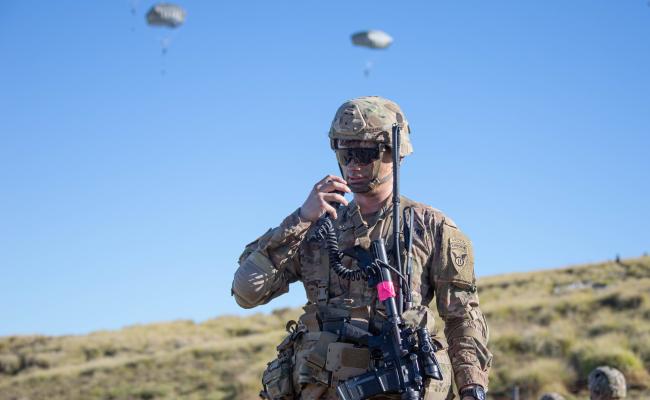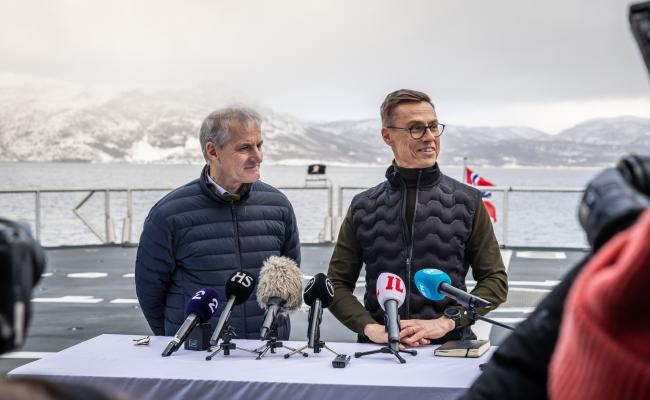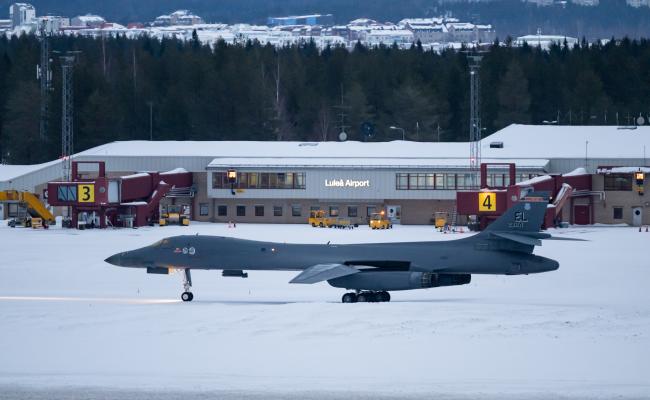UK Aircraft Carrier in the North: “A Formidable Show of Strength”
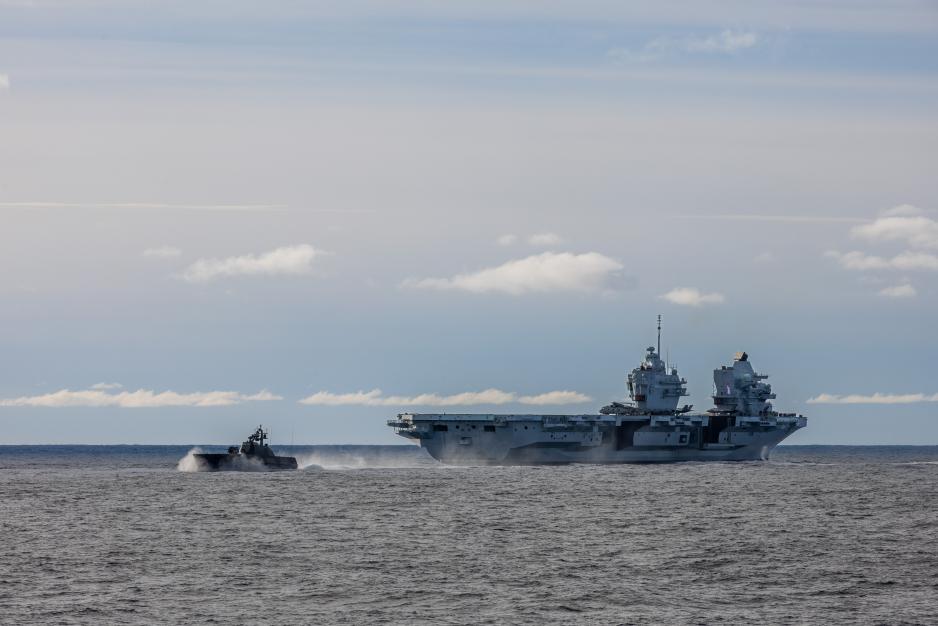
The HMS Prince of Wales sailing off the coast of Northern Norway together with the Norwegian corvette KNM Gnist. The former is one of the UK's two aircraft carriers, both in the Queen Elizabeth class. They can carry up to 36 F-35B fighters and four helicopters. F-35B is visually similar to the F-35-A model that Norway has, but it can perform vertical landings and take off on a very short runway. (Photo: Catharina Molland Dale / the Norwegian Armed Forces)
The British HMS Prince of Wales is now the third allied aircraft carrier sailing in Northern Norwegian waters in under a year. The ship serves as a floating air station during the coordinated Joint Warrior and Nordic Response exercises. With this, NATO is showing great strength, says Norway's Air Force chief.
Significant military activity continues off the coast of Northern Norway within the framework of NATO's overarching Steadfast Defender exercise – the alliance's largest since the Cold War.
More specifically, the activity in the north is part of the British-led Joint Warrior exercise with a maritime focus, which is closely integrated with the Norwegian-initiated exercise Nordic Response. The latter includes operations at sea, in the air, and on land across the Cap of the North. In total, 20,000 soldiers from 13 NATO countries are participating.
Among the more than 50 marine vessels sailing in the north is the UK's aircraft carrier HMS Prince of Wales, with a international fleet group. The ship's airwing consists of F-35B fighters, as well as Merlin and Wildcat helicopters.
"HMS Prince of Wales' participation in Nordic Response is a formidable show of strength for the alliance," says Major General Rolf Folland, Chief of the Norwegian Air Force.
Folland visited the aircraft carrier earlier this week, along with others from the Nordic air operations center, established for the first time to facilitate this exercise activity.
"The capacities we are training in Nordic Response and how we operate together show that NATO can and will defend itself in all domains. The aircraft carrier is a floating air station with F-35 fighters, among other aircraft. The Brits are also an integrated part of the Nordic air operations center. This allows us to plan and coordinate the air operations together efficiently," Folland points out.

Aboard HMS Prince of Wales, Commodore James Blackmore (to the left), Commander of the UK Carrier Strike Group, and Major General Rolf Folland, Chief of the Norwegian Air Force, discussed the recent joint exercise activity and future possibilities for collaboration. (Photo: Stuart Dickson / the British Navy © Crown Copyright 2024)
Close aircraft carrier visits
This is the third time in under a year that Northern Norway has been visited by an allied aircraft carrier.
This fall, the HMS Queen Elizabeth, HMS Prince of Wales' sistership and the Royal Navy's flagship, led an international maritime force that operated in the North, i.a. And in the early summer, the USS Gerald R. Ford – the US' and the world's largest aircraft carrier – trained in Norwegian waters with various allied forces.
The HMS Prince of Wales has also sailed in the High North earlier. In March 2022, the ship participated in Cold Response, an edition of the Norwegian-led exercise series that has now been expanded to Nordic Response. The month after, it sailed to the Norwegian polar island of Jan Mayen.
As the second ship of the Queen Elizabeth class, the HMS Prince of Wales has been in service since 2019. It is diesel-powered, 280 meters long, 70 meters wide, and weighs 65,000 tonnes. The ship has a minimum crew of around 700 people. With aircraft aboard, the crew increases to about 1,600 people.
"Great success"
The HMS Prince of Wales is accompanied by British units, such as the frigate HMS Portland and the support vessels RFA Tideforce and Tidespring, as well as frigates from Canada, Spain, Denmark, and Norway – respectively HMCS Charlottetown, SPS Cristobal Colon, HDMS Niels Juel, and KNM Fridtjof Nansen.
This UK-led Carrier Strike Group has recently participated in training activities involving securing communication lines in the Northeast Atlantic and conducting landing operations on the coasts of Northern Norway. On land, the reception of allied forces and collaboration are emphasized in the face of a fictitious invasion of Finnmark.
As mentioned, a number of other allied marine vessels – such as submarines, destroyers, frigates, corvettes, and landing vessels – are participating at sea. Among these are vessels in Standing NATO Marine Group 1 (SNMG1) and Standing NATO Mine Countermeasures Group 1 (SNMCMG1). Over 100 aircraft, including fighters, maritime patrol aircraft, and helicopters, are in the air.
"The Steadfast Defender exercise is not only a great success but also proof of the alliance's dedication to deterrence and to defend ourselves. We greatly appreciate the long and good relationship between Norway and the UK. The integration we achieve together with F-35 and P-8 [maritime patrol aircraft, ed. note], is a result of this," says Commodore James Blackmore, Commander of the UK Carrier Strike Group.
Visible submarine activity
According to the Royal Navy, four submarines from the UK, Norway, Germany, and France are involved in the exercise.
For example, the UK Carrier Strike Group trained with the French nuclear submarine FS Améthyste a few days ago. It also had a port call in Tromsø, Northern Norway, in September.
"Controlling the underwater environment is crucial to succeeding in our mission," writes the UK Carrier Strike Group on X, referring to exercises that have tested the fleet group's ability to meet submarine threats and thereby defend the HMS Prince of Wales.
The other submarines have also been visible in Northern Norway. At the end of February, the German submarine U-36 was docked in Harstad, wrote NRK.
On Sunday, the Norwegian submarine KNM Utvær was also an eye-catcher as it sailed past Tromsø city. The Norwegian Joint Headquarters has confirmed its affiliation and name.
Nordic Response will be concluded today, but further military activity in the North will follow.
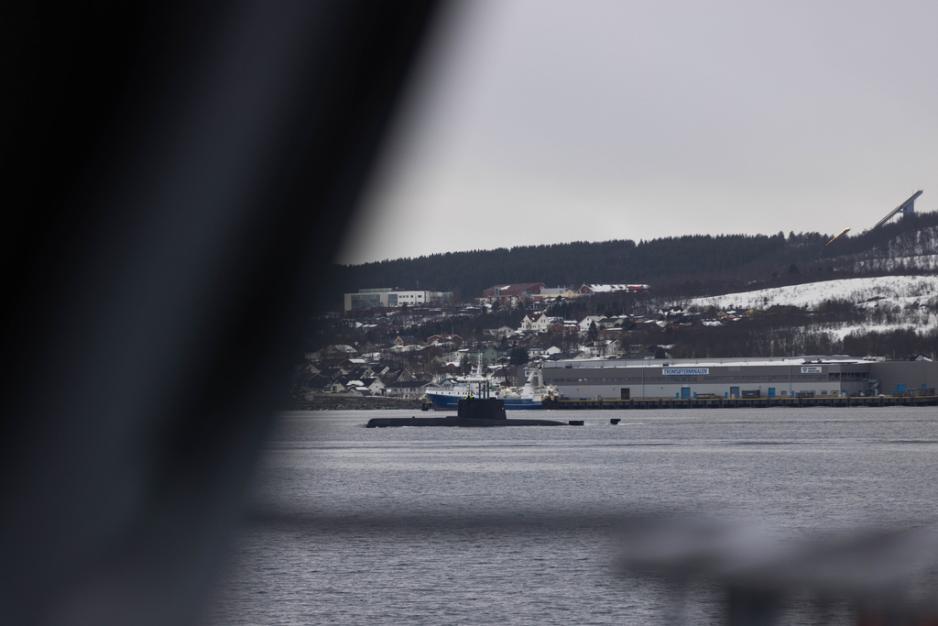
The Norwegian submarine KNM Utvær sailed past the city of Tromsø on Sunday in connection with the Nordic Response exercise. (Photo: Ine Margrethe Stangeland / the Norwegian Armed Forces)



